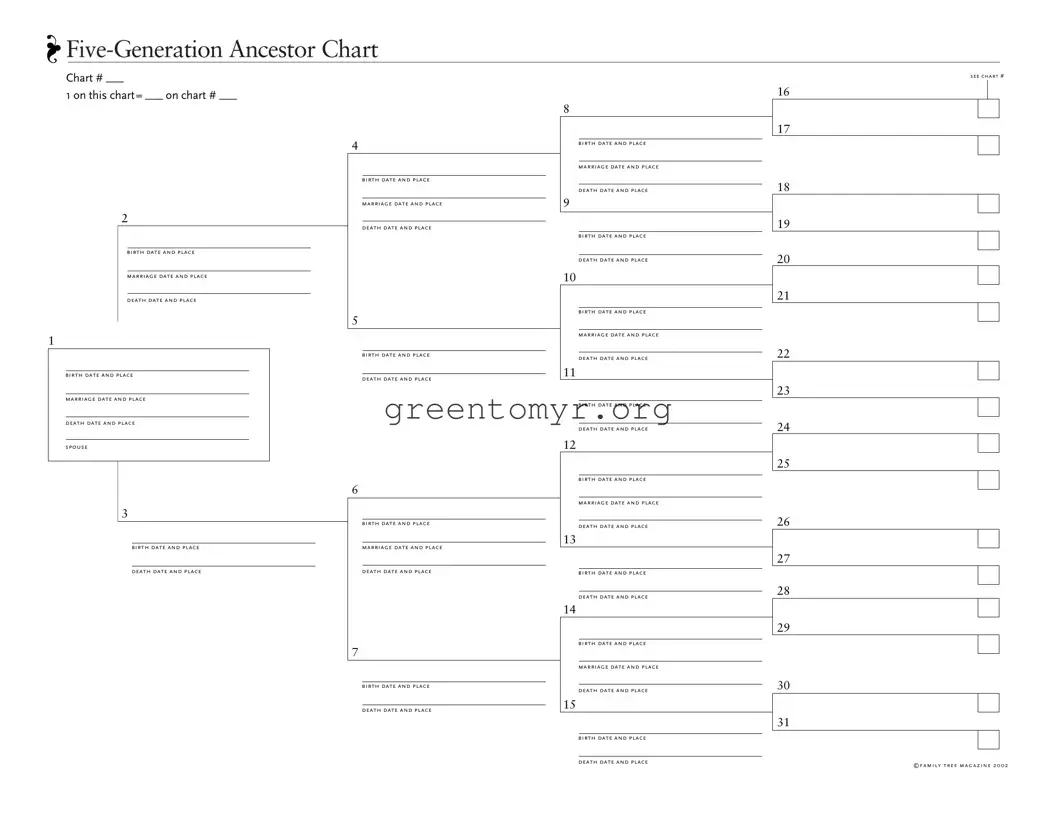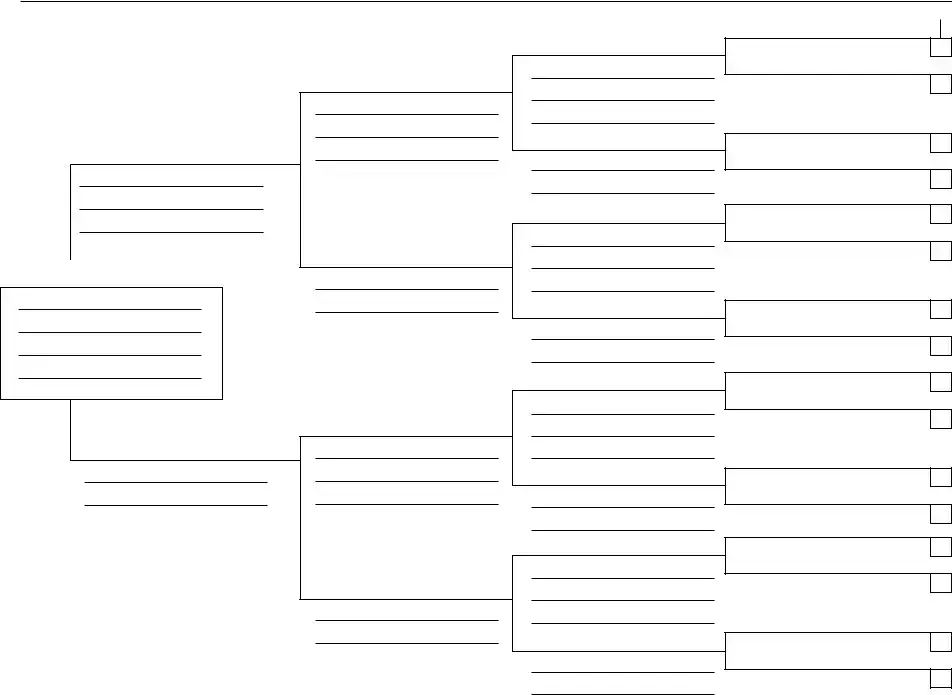The Ancestor Chart form helps you organize information about your family history. It allows you to document details about your ancestors, including their birth, marriage, and death dates, across five generations. Each entry helps build a clearer picture of your family tree.
To complete the chart, start with your own information at the bottom and work your way up. Fill in the names of your parents, grandparents, and great-grandparents, along with their important dates and places. Be as accurate as possible, but don’t worry if you don’t know every detail; you can always update it later.
You will need to provide the following for each ancestor:
-
Name
-
Birth date and place
-
Marriage date and place
-
Death date and place
Make sure to clearly note the details in the designated sections of the chart.
Why is the Ancestor Chart important?
Documenting your family history can be significant for many reasons, including connecting with your heritage, understanding health issues that run in your family, or simply preserving memories for future generations. The chart acts as a valuable reference point for your research and storytelling.
Can I use the chart for other purposes?
Absolutely! The Ancestor Chart can also serve as a foundation for more complex genealogy projects, such as family history books or online family trees. It can help you identify gaps in your knowledge and guide your search for more information.
How do I correct mistakes on the Ancestor Chart?
If you find an error after completing the chart, simply cross out the incorrect information and write the correct details next to it. It’s important to keep your records accurate, as this will help future researchers understand your family's history better.
Where can I find additional resources for genealogy research?
Many resources are available to assist with family history research. Consider checking local libraries, historical societies, and online databases. Websites dedicated to genealogy research, like Ancestry or FamilySearch, can provide helpful tools and access to records.
While the chart provides guidelines for filling out information, there is no strict format you must follow beyond that. You can customize the chart as needed but ensure it remains clear and organized. Consistency in name and date formats will make it easier to read.

